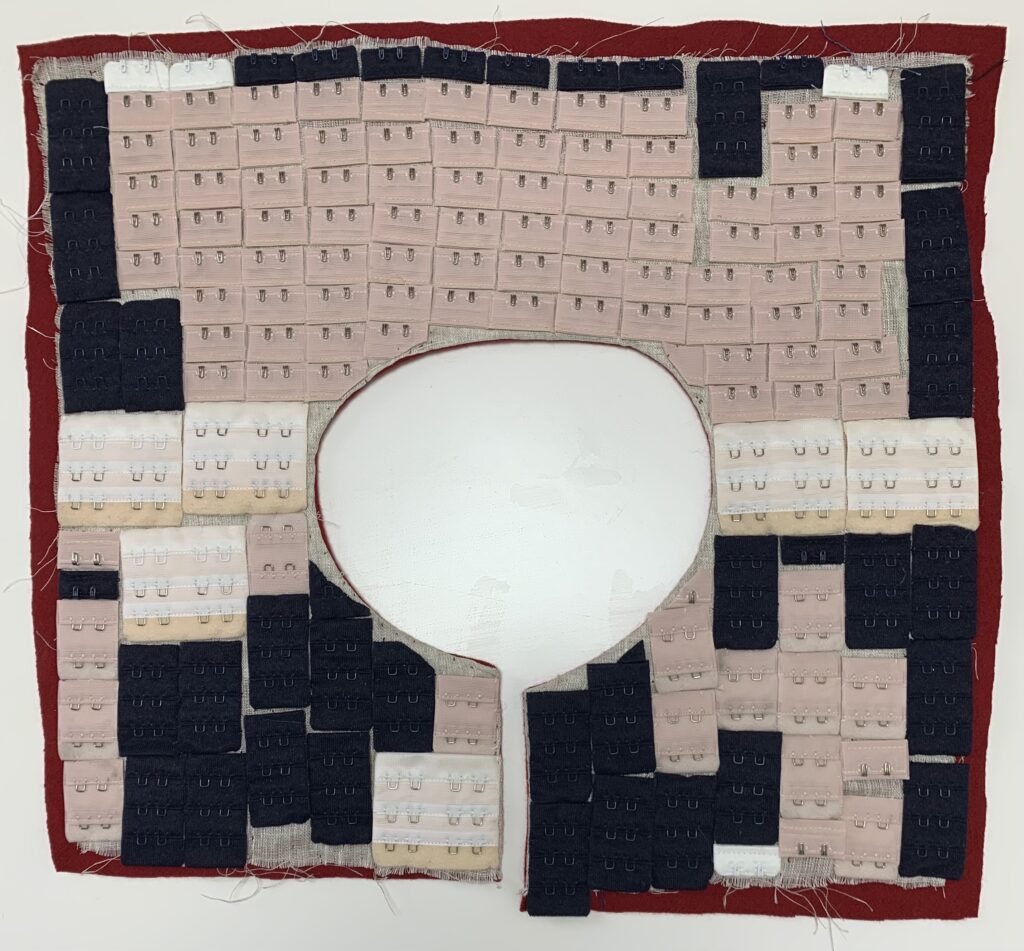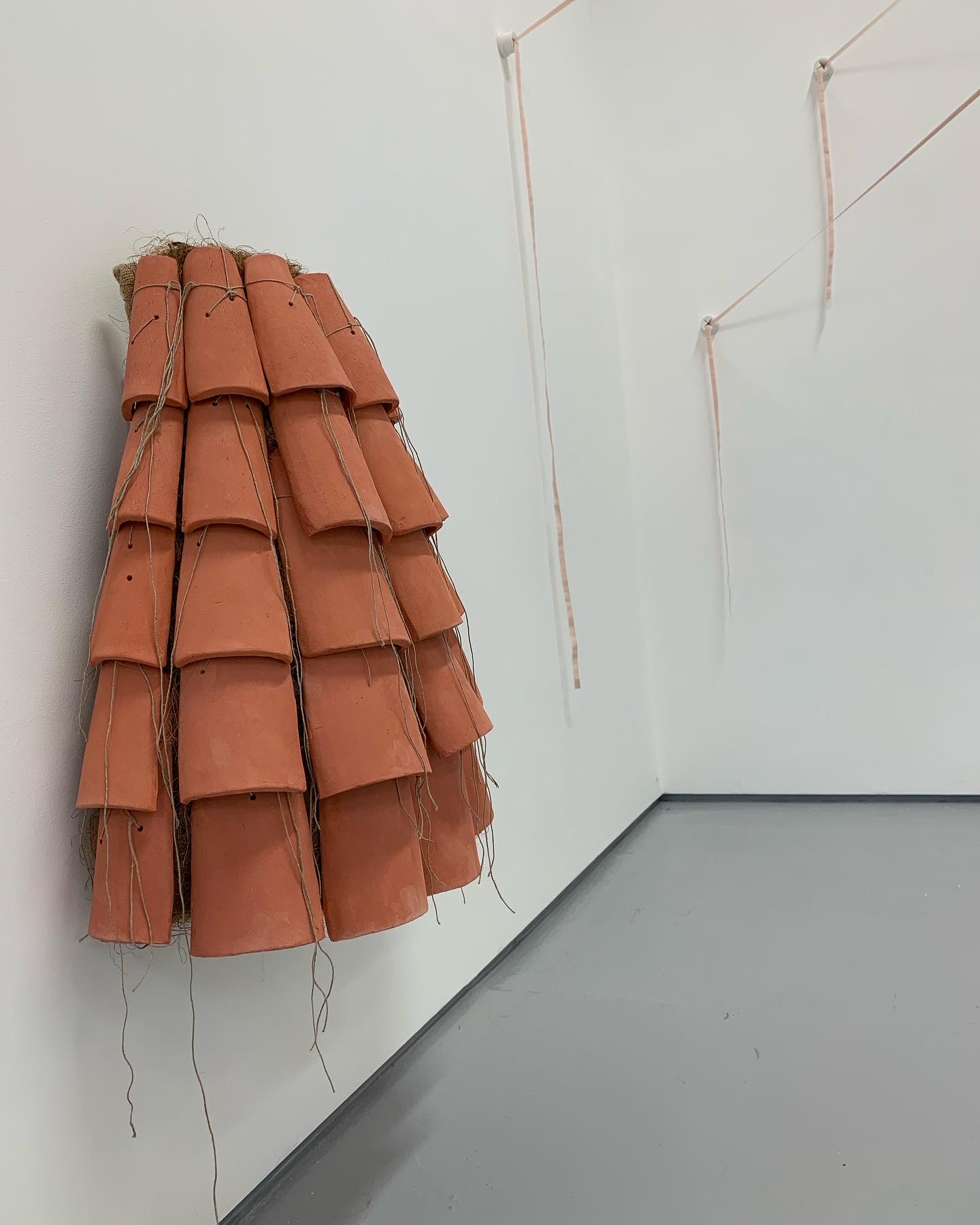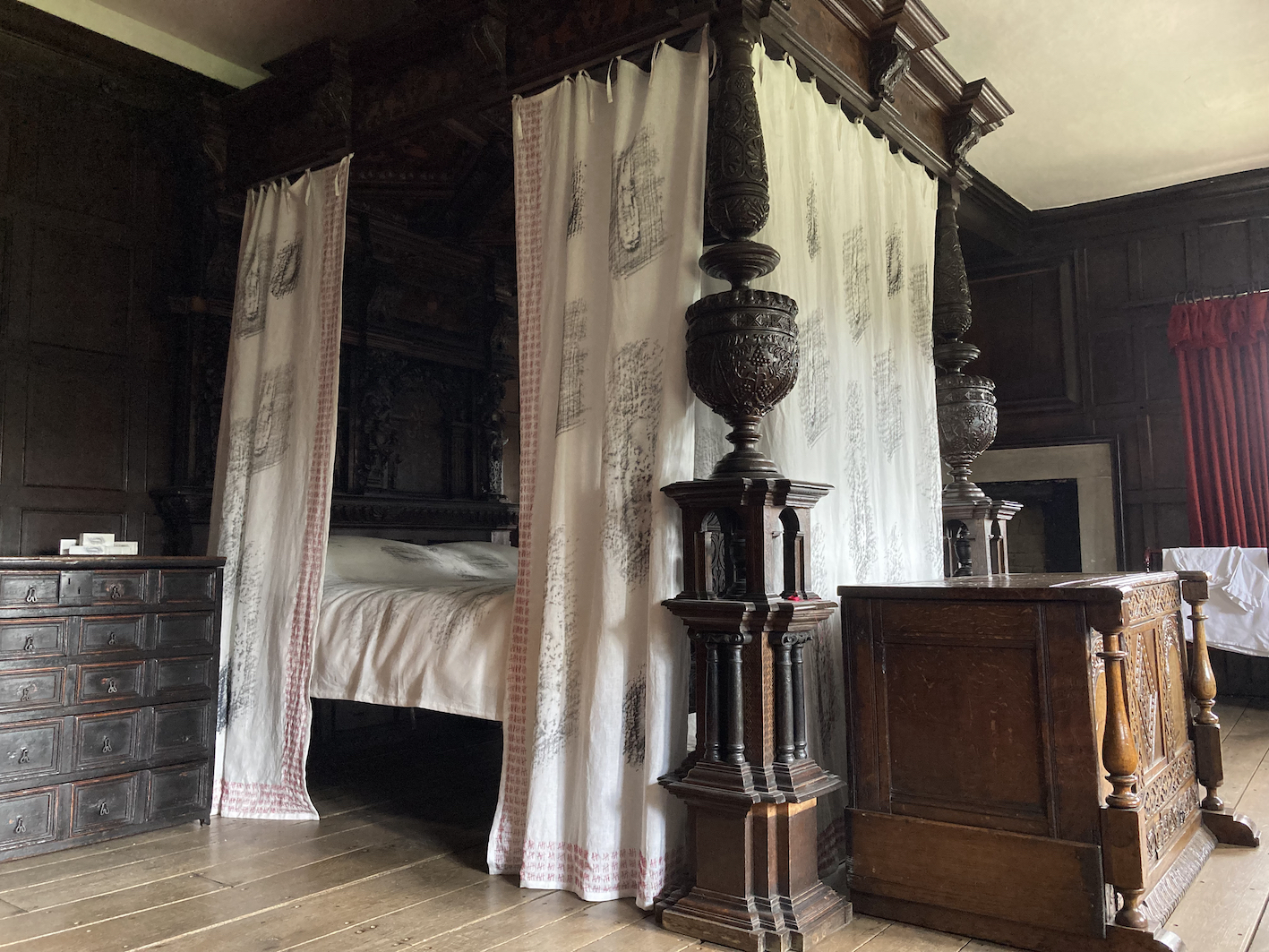Acts of care are amongst some of the greatest we can perform, even as they place expectations on giver and receiver. Few people enjoy the sensation of self-sacrifice or being exhausted by their responsibilities towards others, and yet these are often the net result. But without care things fall apart, and those we love suffer. This complex, burdensome aspect of care was the focus of Emma Gregory’s exhibition Care & Control at Birley Artist Studios in November 2022. It brought together a body of work produced over four years, much of which has not been exhibited previously. What emerged is a story which is deeply personal and yet also highly relatable, leaving visitors to reconsider the balances and burdens within their own relationships.
Gregory’s work is informed by her own experiences of giving and receiving care as a child, and as a mother and teacher. The way that Care & Control brings separate series of works to sit beside each other – highlighting their interconnecting threads – made the artist reflect even more than usual about ‘why my compulsion to be the best possible carer and nurturer of other people is so strong’.

The power of Gregory’s work is rooted in its transgressions. It’s based on play, a fundamental aspect of her process. Among other things, play seems to be a way for the artist to get to grips with challenging situations. Many works in the show have a sense of desperation bubbling palpably under the surface – a sense of something accessible, yet somehow traumatic. Take the brilliant series ‘Shall I Be Mother?’, wherein a number of teapots are contorted into shapes that make the simple act of pouring far from straightforward. Gregory calls them ‘dysfunctional’, trying their best to fulfil their purpose but ultimately not quite meeting expectations. They are deliberately funny; in one display three teapots are set up beside a sideways table, its legs arranged like a child sitting ready for a tea party. Elsewhere, from puppets to plates, it’s the same sense of bathos, with playability the route into their messages. The finger marks left in the clay serving platter ‘POKE’, for example,draw you in, asking you to consider the emotion behind their origin.
Unsurprisingly, Gregory’s role as a mother features strongly in her work. Her daughter is one of the first subjects to emerge in conversation – or, more correctly, within the space of her thoughts – and can be felt across many of the pieces in Care & Control. She is depicted as an artist herself, taking a photograph of Gregory trying on bedsprings as a kind of headdress, in a jovial pose which captures the humour of the experiment. It is also her daughter who inspires moments where trauma feels closest to the surface. ‘The Campaign’ series of monochrome prints is about generational trauma and Gregory’s fears about passing on her negative experiences and anxieties. Then, throughout Covid lockdowns, her practice became an an act of care towards her daughter by providing an outlet for her difficult emotions. Gregory confesses that it became a crutch, ‘a place where I could put anxiety without her having to see it’.
From serving food to tying hair, Gregory’s work is domestically coded. Home was the studio in which much of this work was produced, sometimes even providing the raw materials. It’s also the place in which care to others is most intimately expected, demanded and delivered – most often by women. Gregory’s work explores the question of whether her urge to nurture is a natural part of her personality or one which has been shaped by the gendered expectations placed upon her:
‘I didn’t set out to make a gendered pile of work but I really have, I can see that. I feel myself to be in the roles that I’m in because I’m a woman. And I’m railing against it because culture has shifted, and I’m allowed to’.
Talking to Gregory there’s a sense that it’s time for this gendering of caring roles to shift. ‘The Campaign’ includes an image of a woman having her hair done by a sinister-looking faceless puppet; an analogy for Gregory and her daughter – and those who cared for Gregory before her – in which a cycle of resentment is passed on. She observes that ‘we’re both actually doing something that neither of us want to be doing. I don’t want to be giving care to a kid that doesn’t want to have the care given to them’. The line between loving mother and controlling matriarch can be a fine one.

Though not all caring responsibilities are equal. Gregory says, ‘for me, being cared for is being taught something – I want to develop’. Learning is fundamental to the development of her practice, and being able to produce work across multiple mediums, from print to ceramic, has been made possible through learning from other practitioners. An appreciation for her support networks is expressed in ‘The Prop’, a simple construction with a pole leaning away from a wall, held steady by taut bra strap material. She explains: ‘The lengths of bra strap are all my female collaborators, and I’m holding them up. I’m supporting them. But actually, they’re holding me in place’. Neither element could be stable in its form without the other.
Some of these collaborators have emerged from Gregory’s six years of leading the course ‘Press Play’ at Spike Print Studio in Bristol. Inspired by her belief in the power of play as a means of helping artists develop a deeper understanding of their own practice, the course has helped her to develop strong artistic relationships. She comments on the challenges of teaching practice:
‘You can’t talk about the mess which is your own artistic practice. You can say ‘here’s a tool that I found useful’. But you can’t say, ‘I haven’t been able to do anything for about ten days’. You can’t show that much weakness and vulnerability. They need to believe that you’ve got it together’.
Gregory is now moving on from teaching, ready to reconnect more deeply with her own practice. There are parallels with the struggles of teaching the course and balancing her roles as mother and artist: ‘You sink and sink into your practice in order to start making in flow, and then you have to surface [because] it’s kicking-out time at school… but you have to surface slowly. If you come up fast then your irritation at being pulled away from the work and the fun, it shows’. But her daughter is now old enough, independent enough, for Gregory’s maternal responsibilities to take a back seat.

Three weeks after Care & Control, Gregory returned to Preston for her residency at Artlab Contemporary Print Studios (University of Central Lancashire). Speaking with her again towards the end of the week, it seemed as though a week of intense work has thrown up its challenges; she describes it as a week ‘in combat’ with printing. But seeing the work that emerged, it seems as though this ‘combat’ shares some traits with her use of play, allowing her to contort ideas and renegotiate her sense of self. To Artlab’s growing collection of works by contemporary female artists (titled Women In Print), Gregory will add a series of prints based upon the image of a skirt. The basic shape is drawn out and used as a backdrop for questioning the role of personality versus gendered expectation. The wardrobe staple becomes a site of enquiry: ‘Am I a woman because I’m wearing a skirt or do I wear the skirt to be the woman?’.
Images from Care & Control appear on the skirts, but with subtly altered meanings. In some prints the skirt is given a theatrical quality, its flow emphasised by a curtain-like motif which underscores the dynamic movement of the garment. And perhaps because of the playful nature of theatre, where the line between fiction and reality is blurred, Gregory seems to have found a way to bring her feelings closer to the surface. For example, ‘Bawd’ is printed in big letters on a draining board – a pun shedding light on an aspect of her true, fun self. A yoke, covered in attachments to carry others with, is set against a yellow background that stands as much for hope as for fear, imbuing the object with another level of strength.
From the residency, Gregory is most pleased with three prints of a skirt in red. The colour is loose, applied with varying degrees of saturation. To the artist they very clearly relate to a spectrum of female sexuality tropes: bright red is libido in full flow, or faded through domestic toil and expectations. The skirts represents the absurdity of all these tropes and their inherent contradictions: ‘how do you marry the idea of the cleaner with the sexy trollop?’

Printed on one of them is a yellow conical shape, what Gregory describes as ‘both spotlight and dunce’s hat’. It features previously in Care & Control and on her website in a similarly self-deprecating and ambiguous way, but when emblazoned across a skirt in her residency prints, it leans into a theatrical interpretation. Here it shines a light onto the shape of a hand with crossed fingers – a movement she uses for managing anxiety and another familiar motif from Care & Control, a subtle nod to something hidden away.
The positioning of the spotlight motif on the skirt brings it right out into the open, still vulnerable but with that sense of humour that runs through so much of Gregory’s work. There’s a strength in how this fundamental part of Gregory’s experience is quite literally put into the spotlight. Though rooted in narratives about caring for others, her work has always been about revealing emotions in a way that’s not always possible in carer relationships. Gregory now seems ready to make this even plainer, using sharp humour and intelligent play to step out of ‘the centre of the vortex at home’ and express herself with more openness.
Care & Control was on display at The Birley Artist Studios 14-19 November 2022. This exploration was informed by a series of conversations with Emma Gregory, the third in a series of written responses to artist residencies at Artlab Contemporary Printmaking Studio (UCLan), Preston.
Julia Johnson is a writer based in Liverpool.
This exploration is supported by Artlab Contemporary Printmaking Studio, at the University of Central Lancashire.
Featured content
Published 23.01.2023 by Lara Eggleton in Explorations
1,823 words


